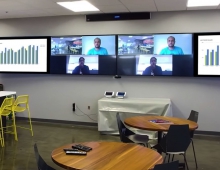
CIA Used Sophisticated Hack Techniques To Apple Devices: WikiLeaks
New documents from WikiLeaks point to a CIA program to hack Apple's iPhones and Mac computers using techniques that users couldn't disable, even by resetting their devices.
The latest disclosures describe techniques for rewriting devices' firmware in ways that would maintain a hacker's access even if a user resets a phone or computer to factory settings. Doing so wipes out all apps and the operating system and installs a clean version; it is an extreme measure sometimes used to deal with technical problems, but is also the sort of step that someone suspicious of surveillance might take when getting a brand new phone.
A December 2008 document describes "NightSkies," a tool apparently designed to target the iPhone 3G; the document claims it can retrieve files such as contact lists and call logs and execute other commands. WikiLeaks suggested that the CIA has been infecting the iPhone supply chain of its targets since at least 2008.
However, the document describes only how to install the malware on a "factory fresh" version of the 3G - specifically, the iPhone 3G running the 2.1 version of Apple's operating system.
Other documents released describe similar exploits for Mac computers. One hides in the firmware of Apple's Thunderbolt-to-Ethernet adapter and requires someone to plug in that adapter to install the malware. Another targets a specific Mac model, the MacBook Air with the Leopard version of the Mac OS system - current at the time, but now seven generations old.
Obviously, the exploits pose little threat to typical users, as they involve old Apple devices models and the require physical access to devices.
Apple didn't respond to a request for comment.
Two weeks ago, WikiLeaks published thousands of alleged CIA documents describing hacking tools it said the government employed to break into computers, mobile phones and even smart TVs from companies like Apple, Google, Microsoft and Samsung.





















